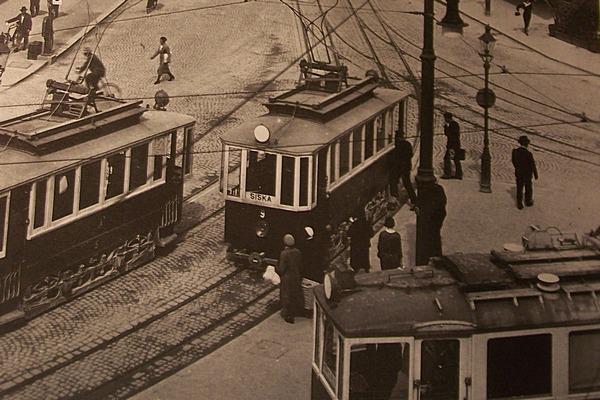
For much of the 20th century, the distinctive clatter of streetcars (also known as trolley cars or trams) could be heard on the streets of Ljubljana. A massive crowd turned out to witness their retirement, and many people still wistfully remember the city’s first form of public transportation.
It all began in 1900, when Ljubljana’s visionary mayor, Ivan Hribar, announced the construction of a streetcar network. Exciting new projects got implemented quickly under Hribar’s watch, and the first streetcars took to the streets on September 6, 1901. The arrival of a brand-new form of transportation was big news throughout the Slovenian lands, and thousands of people flocked to the city to see the streetcars for themselves. More than six thousand passes were sold on the first day alone.
Not everything proceeded smoothly. A number of prominent citizens protested because they didn’t get streetcar stops in front of their homes. Church authorities weren’t happy that the streetcars wouldn’t give way to religious processions. And a nationalist newspaper editorial blasted the streetcar company for being a “German-Jewish enterprise.” (The streetcars were built by Siemens, and the German corporation acquired a stake in the municipal transportation company.)
Still, local residents grew to embrace their streetcars, which gave Ljubljana a big-city flavor, forever transforming the once sleepy provincial town. In 1928, a plan to replace the streetcars with busses turned out a failure, and the competing bus company went out of business. The streetcar network expanded from approximately five kilometers to more than 20 before World War II. It even served areas such as Šentvid and Rakovnik, which were fairly remote suburbs at the time, and helped to integrate them with the rest of Ljubljana.
During World War II, Ljubljana was encircled in barbed wire by the Axis occupiers. The streetcar network continued to operate, however. It even crossed the newly established German-Italian border in the city’s suburbs, and passengers had to undergo a thorough inspection before their streetcar was allowed to proceed across the international frontier.
In the post-war years, authorities began to view the streetcars as hopelessly outdated. Trolley-buses, which also used hanging catenaries but drove on rubber wheels rather than rails, were seen as much more modern. On December 20, 1958, a formal public “funeral” was held for Ljubljana’s streetcar as the network was abolished after more than half a century of operation. Frane Milčinski, a popular Slovenian comedian, headed the proceedings, as thousands of citizens gathered to say farewell to one of the city’s icons. Ironically, trolley-busses were themselves abolished in the 1970s and replaced with busses.
In recent years, the city has seriously considered reintroducing rail-based public transport in the form of state-of-the-art trams that have proven so successful in other European towns. More than a century after Ljubljana got its first streetcar, the same technology may yet have a role in making the city a more pleasant place to live.

































































